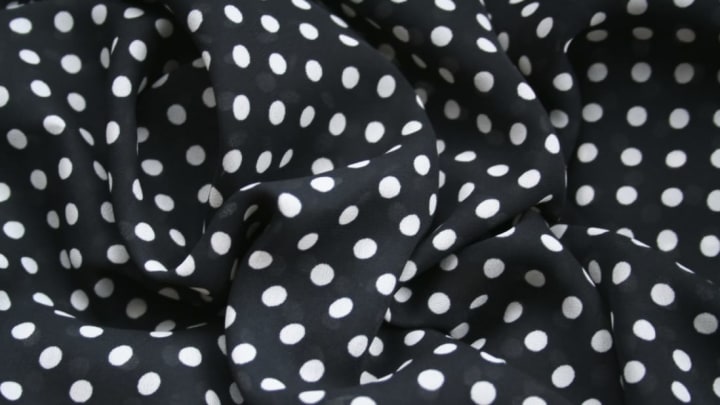Sure, it’s a fun name, but is there a link between this spotted pattern and actual polka? The answer is a resounding “kind of.”
Let’s begin at the beginning. What we now call polka dots have been around for centuries and, over the years, they’ve gone by several aliases. In the mid-1800s, for example, little round spots were a common sight on Northern European dresses, prompting many Germans to call these circles thalertupfen after a similarly-sized coin dubbed the “thaler.” During that era, Deutschland and the continent at large were being swept away by a musical torrent of polkamania. This Czech export spread like wildfire, eventually reaching American shores somewhere around the 1860s.
So what’s the connection? In fashion—as in comedy—timing is everything. Halfway through the 19th century, dotted dresses and polka dancing were simultaneously surging. Therefore, most historians have concluded that the former were simply named after the latter by virtue of being trendy at the same time. However, the bond between them may actually be a bit more definite: Some gilded age polka clubs began encouraging their members to wear spotted garments as a kind of uniform.
Regardless of their origins, polka dots have had an enormous impact on popular culture, from Miss America 1926 and her speckled swimsuit to Winston Churchill’s charming bow-ties. Even Batman’s gone toe to toe with an obscure villain named “Mr. Polka Dot,” whose powers consist of plucking the blotches off his outfit and transforming them into various dastardly weapons (there’s no word yet on whether or not he’ll be appearing in the Dark Knight’s next movie, but we’ve certainly got our fingers crossed).
You may also be wondering where the word “polka” itself came from. In Poland’s native tongue, it means “Polish Woman.” However, it could have alternatively been based on “pulka,” the Czech term for “half-step.” At the end of the day, etymology isn’t always an exact science.
